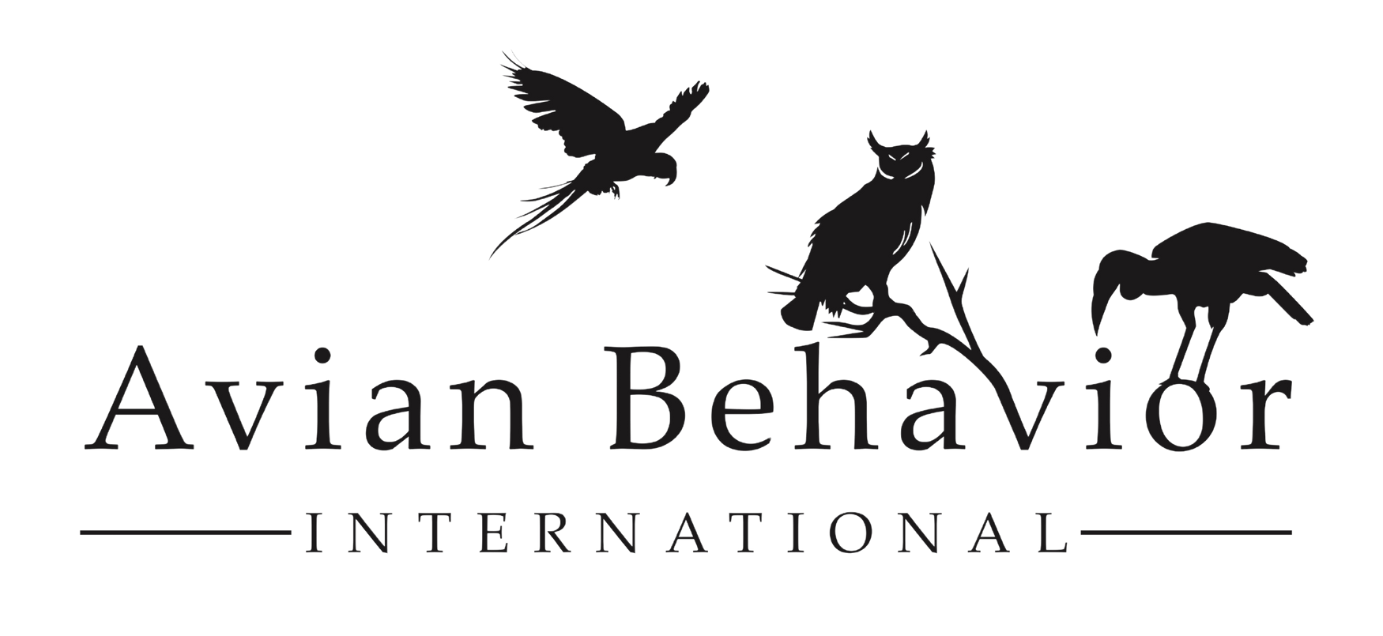20 Sep The Power Of Language And Communication In Bird Training
One of the clunkier and less popular sides of animal behavior science is that it feels less palatable, less attainable to all because of the dense scientific language that we use. When I frame a behavioral interaction as a “negative reinforcement contingency”, I lose a good portion of my audience.
While I am not going to totally sell out here and say that the use of scientific language doesn’t matter, when building a training program, it is important to find a system that works with your team and at the same time is effective in achieving your behavior goals.
We know as scientific practitioners that labeling behavior matters. Studies show that when rats in a laboratory setting were arbitrarily labeled dumb rats and smart rats, their experimenters handled them differently and the rats actually achieved different outcomes in their trials because of the way the experimenters viewed them and set expectations for them. (Rosenthal, R. and Fode, K.L., 1963)
The same can be said not just for the individual birds in our care, such as whether we call them jerks, sensitive, aggressive, or bold, but also the whole species. To further this point, on a systemic level owls have been traditionally referred to as unintelligent in the avian training and educating community, even using this as a talking point to counter the wise owl myth.
Research shows this construct could not be further from the truth, simply that owls operate using their adaptations very differently in ways that we are used to categorizing intelligence. Before I shout from this tangential soapbox, the germane point here, looping back to our topic, is that labels do matter. They change the way we work with that which we label.
So, it’s not that we have to all get on board with the clunky science jargon, walking around operationalizing every action we see. Trust me, this gets old real fast. We can agree on terms that fit our environment and our goals, and those that we have clearly defined in this setting.
Honesty in communication
Now let’s talk about honesty in communication.
Transparency and accountability is obviously a big deal for us at ABI and it is one of our core values – in case you haven’t noticed in the way that we teach. This is because your team and your birds won’t get very far if mistakes, failures, and misunderstandings are getting covered up.
Bird behavior is the ultimate teacher. Rarely do I step up a bird and it reports a problematic behavior out of the blue. When a bird is showing residual behavior from a previous experience as opposed to a present variable, it means that we then have a responsibility to assess how much energy to place on working through that shadow response to avoid future patterns if that behavior has problematic overtones.
Transparency is one of those concepts that you can mandate, you can put rules around it, but if you don’t create a culture to support it, you still won’t have it. Much like poaching, the very nature of the culture we foster in our organizations is whether the problems continue when we aren’t looking or they are self-regulated.
Ironically, the animal-human relationship can be sensitive, impassioned, political, and even ego-driven. It is critical that we face these realities head on so that we understand and unearth the challenges that face us in building a training program that actually works.
Any threat to these ideas can feel like a threat to us as a person. This strips the science from the practice of training, as science is meant to be as objective of an arbiter as we can possibly get. Either something works or it doesn’t, and if it isn’t working over a significant period of trials, then we assess the variables.
That means that we need this information to be reported. Building this type of culture takes time and practice and it starts with leadership and transparency. It is in the spirit of science and welfare that we understand how important it is for our birds that we teach one another how to report mistakes and how to receive mistake reporting. This again is how filming sessions can be such a hugely influential practice, because it not only is an objective teacher but it also allows us to review and act on our sessions in ways that human feedback often does not.
In suitable avenues, we hope our practices of transparency inspire others. This doesn’t mean that every audience is suitable for all forms of transparency, as context is necessary to draw the germane lessons from the work we provide, but it is still part of the work that we do to teach people to help them appreciate more the joys and challenges of sharing our world with birds.
Language and communication are at the core of every training program. Striking the right balance between scientific terminology and practicality, using common language within your team, being transparent and honest about challenges, and analyzing behavior patterns are all essential elements in building a successful training program.
A training program is only good if it’s one that a team can use. Ensuring that we have created a safe environment and a language that works for our teammates means that we are removing obstacles that come between us, our goals, and the life we want with our birds.
References: Rosenthal, R., & Fode, K. L. (1963). The effect of experimenter bias on the performance of the albino rat. Behavioral Science, 8(3), 183–189.

